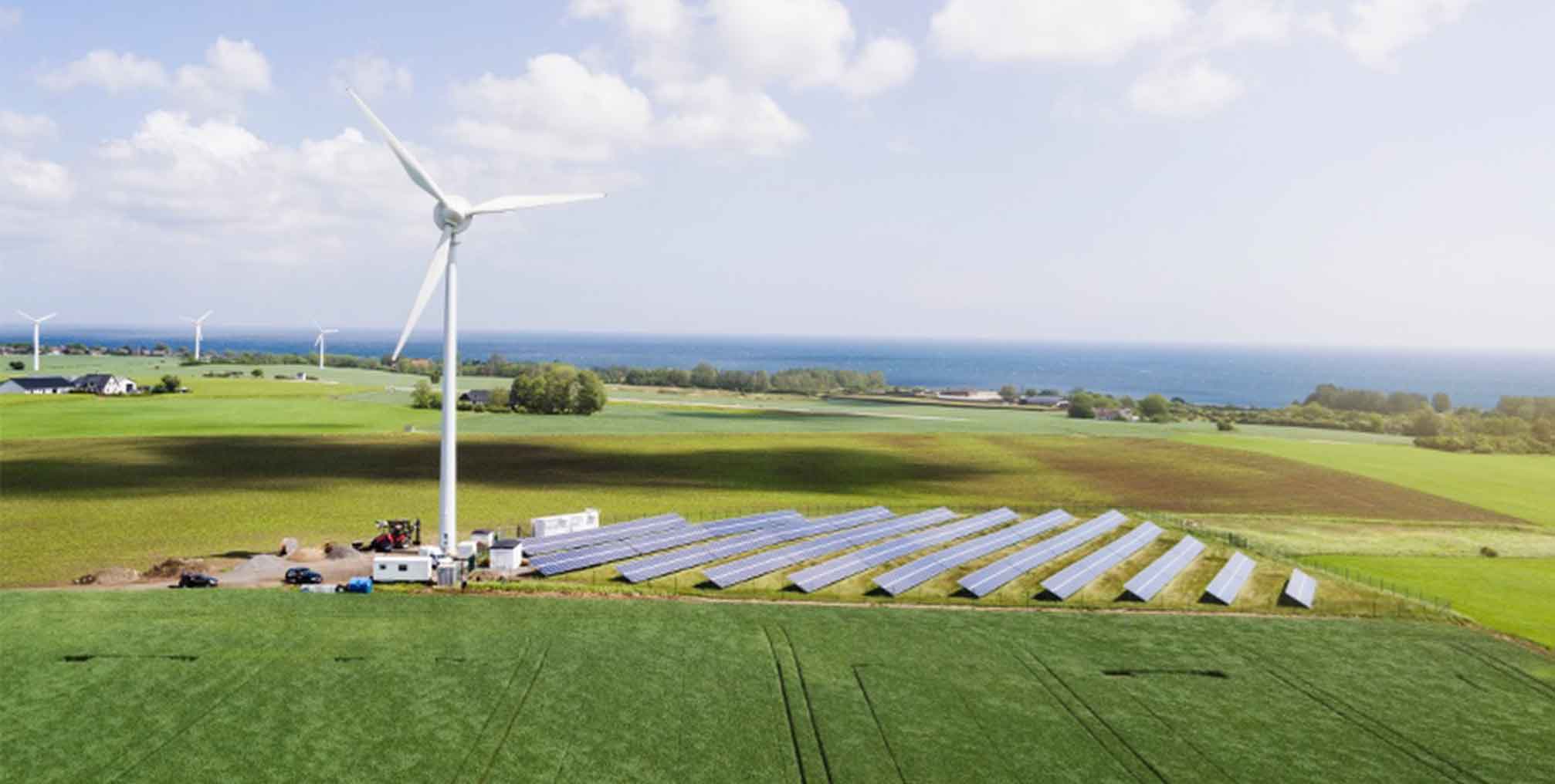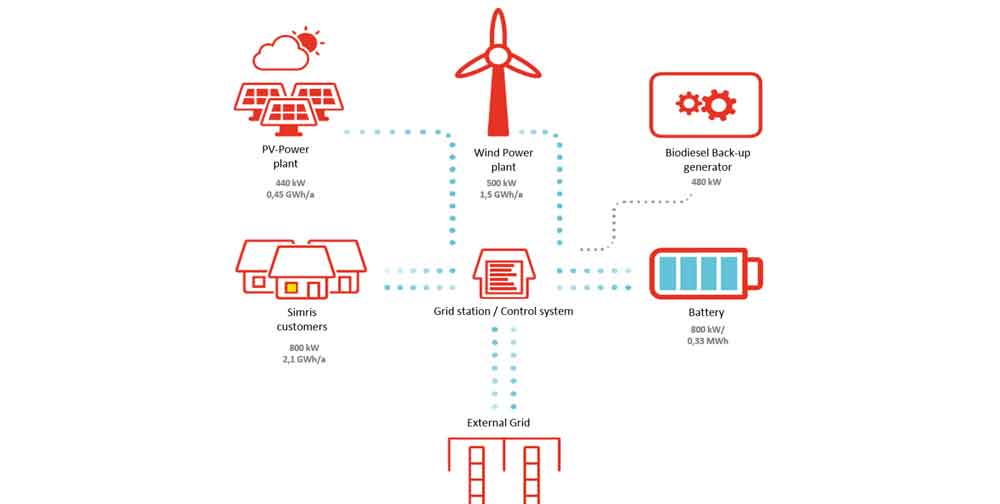Local energy system in Simris
In the transition to a low-carbon energy system, E.ON is operating a local energy system in the rural village Simris comprised by 100% renewable energy, the first of its kind in Sweden...

In the transition to a low-carbon energy system, E.ON is operating a local energy system in the rural village Simris comprised by 100% renewable energy, the first of its kind in Sweden. Key concepts include the use of local resources and renewable electricity production within the Simris microgrid in addition to the implementation of flexibility solutions such as batteries at customer houses. In combination with having customers actively involved in the project, this innovation project is a way towards creating the energy solutions of tomorrow.
The transition to a low-carbon energy system requires a high penetration of renewable energy sources (RES) and efficient utilisation of energy. The incorporation of intermittent RES entails challenges due to their variable power output, which stresses the need for flexibility options that provides sufficient grid balancing functions. E.ON, is a beneficiary of INTERFLEX, a project established within the framework of the EU-funded research and innovation programme Horizon2020. Within INTERFLEX, six demonstration projects are conducted in five EU Member States (Czech Republic, France, Germany, The Netherlands and Sweden), with a total budget of about 23 million Euros. The project explores pathways to adapt and modernize the electric distribution system in line with the objectives of the 2020 and 2030 climate-energy packages of the European Commission. The aim of the demonstrations is to integrate and test innovative technical and local flexibility solutions to increase the share of renewables on the distribution grid.
In this regard, E.ON is running a demonstration project in the rural area of Simris, implementing a local energy system (micro grid) with the capability of going islanded and powered by 100% RES. The small village of Simris is situated in the south of Sweden, within E.ON concession area with approximately 150 connected customers (800 kW). The energy provided to the customers is produced locally by a Wind Turbine (500 kW) and a PV-farm (440 kW). In addition to the production units, a main central battery system (330kWh/800kVA) and Back-up biodiesel generator (480kW)) are installed to enable island-mode operation. In this regard, the battery system is operating as the grid forming unit and is in charge of the almost instantaneous balancing of the micro grid. With a central micro-grid controller, the system has the capability to seamlessly switch between interconnected and islanded mode. Soon, beginning of 2019, an additional battery (Redox Flow Battery: 1600 Kwh/200kVa) will be added to the energy system in Simris to further enable island-mode operation.
Flexibility is tested through deploying both decentralized and centralized balancing technologies, such as Power-to-Heat and Power-to-Power assets. For instance, customers are actively participating in the project through installed decentralized steerable assets in their households, which are controlled by E.ON through Demand Side Response to provide flexibility to the electricity grid.
The transition to a low-carbon energy system requires a high penetration of renewable energy sources (RES) and efficient utilisation of energy. The incorporation of intermittent RES entails challenges due to their variable power output, which stresses the need for flexibility options that provides sufficient grid balancing functions. E.ON, is a beneficiary of INTERFLEX, a project established within the framework of the EU-funded research and innovation programme Horizon2020. Within INTERFLEX, six demonstration projects are conducted in five EU Member States (Czech Republic, France, Germany, The Netherlands and Sweden), with a total budget of about 23 million Euros. The project explores pathways to adapt and modernize the electric distribution system in line with the objectives of the 2020 and 2030 climate-energy packages of the European Commission. The aim of the demonstrations is to integrate and test innovative technical and local flexibility solutions to increase the share of renewables on the distribution grid.

In this regard, E.ON is running a demonstration project in the rural area of Simris, implementing a local energy system (micro grid) with the capability of going islanded and powered by 100% RES. The small village of Simris is situated in the south of Sweden, within E.ON concession area with approximately 150 connected customers (800 kW). The energy provided to the customers is produced locally by a Wind Turbine (500 kW) and a PV-farm (440 kW). In addition to the production units, a main central battery system (330kWh/800kVA) and Back-up biodiesel generator (480kW)) are installed to enable island-mode operation. In this regard, the battery system is operating as the grid forming unit and is in charge of the almost instantaneous balancing of the micro grid. With a central micro-grid controller, the system has the capability to seamlessly switch between interconnected and islanded mode. Soon, beginning of 2019, an additional battery (Redox Flow Battery: 1600 Kwh/200kVa) will be added to the energy system in Simris to further enable island-mode operation.

Flexibility is tested through deploying both decentralized and centralized balancing technologies, such as Power-to-Heat and Power-to-Power assets. For instance, customers are actively participating in the project through installed decentralized steerable assets in their households, which are controlled by E.ON through Demand Side Response to provide flexibility to the electricity grid.
